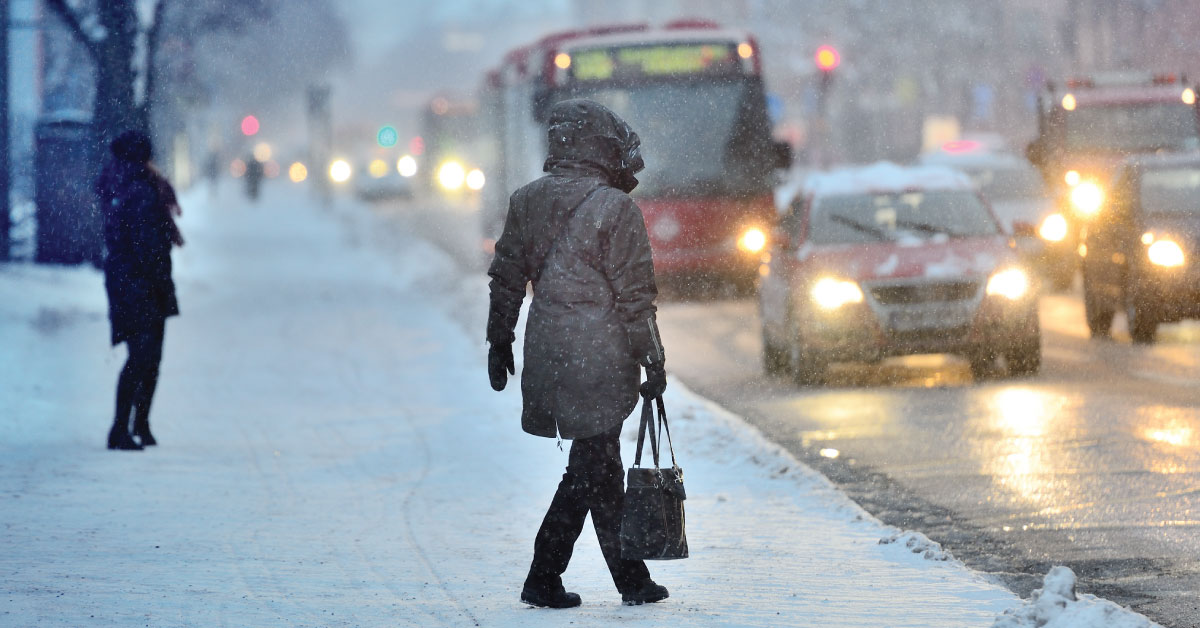
21 Nov Winter means cold: precautions to take

Because we are living in the most severe winter climates of any country in the world, it is important to learn how to adjust to cold conditions so we can enjoy the winter weather.
In general, our risk of health effects like windburn and frostbite increase at wind chill values below -27.
PEOPLE AT RISK
While anyone who isn’t dressed warmly is at risk in cold weather conditions, some are at greater risk than others for frost bite and hypothermia: homeless people, outdoor workers, people with certain medical conditions such as diabetes, peripheral neuropathy, and diseases affecting the blood vessels, people taking certain medications including beta-blockers, infants (under 1 year) and seniors (65 years or older).
HEALTH RISKS OF EXTREME COLD
What is windburn
Windburn occurs when cold wind removes the top layer of oil from the skin causing:
- excessive dryness
- redness
- soreness
- itchiness
Although windburn is different than sunburn, people often confuse the two because the symptoms are similar.
TREATMENTS : Do not scratch or rub the affected area–it can damage the skin. Apply a protective skin care product (e.g. therapeutic moisturizers) to the affected area(s) as needed to help relieve the symptoms of windburn. Use a protective lip balm to treat lips.
What is frostbite
When the temperature drops below 0ºC (32ºF), blood vessels close to the skin constrict to protect the core body temperature. When your body is exposed to the cold for a long period of time, blood flow to your hands, feet, nose, and ears can be severely restricted. The combination of poor circulation and extreme cold can lead to frostbite.
Frostbite generally occurs in body parts furthest from the heart:
- hands
- feet
- nose
- ears
Mild frostbite (frostnip) makes your skin look yellowish or white but it is still soft to the touch. Your skin might turn red during the warming process, but normal colour returns once the area is warmed.
Severe frostbite can cause permanent damage to body tissue if it is not treated immediately. Nerve damage occurs and frostbitten skin becomes discoloured and turns black.
After some time, nerve damage becomes so severe that you will lose feeling in the affected area and blisters will occur. If the skin is broken and becomes infected, gangrene can set in which can result in loss of limbs.
TREATMENTS : Mild frostbite (frostnip) can be treated in two ways:
- Passive warming – move to a warm room, wrap yourself in blankets or reheat your body by skin-to-skin contact with another person.
- Active warming – this can be done along with passive warming. Add heat directly to the frostbitten area. The idea is to thaw the injured skin as quickly as possible without burning yourself. Thawing frostbitten skin is very painful so the injured skin should be placed in water that is just above body temperature. Do not rub, massage or shake the injured skin because that can cause more damage.
Severe frostbite requires immediate medical attention. While you are waiting for help to arrive begin treating it with passive and active warming.
What is hypothermia
There are three stages of hypothermia:
Stage 1
When your body temperature drops by 1 or 2ºC (1.8 or 3.6ºF), you start shivering, get goose bumps on your skin, and your hands become numb. Your breath can become quick and shallow, and you may feel tired and/or sick to your stomach. You may also experience a warm sensation, which means your body is entering stage 2 of hypothermia.
Stage 2
Your body temperature has dropped by 2 – 4ºC (3.8 – 7.6ºF) and your shivering is strong. Muscles are uncoordinated and movements are slow and laboured. You may suffer mild confusion, become pale, and your lips, ears, fingers, and toes may turn blue.
Here’s an easy test to check if you have stage 2 hypothermia: Try touching your thumb to your little finger. If you can’t, your muscles are not working properly and you’re experiencing stage 2 hypothermia.
Stage 3
If your body temperature drops below 32ºC (89.6ºF), the shivering will stop but you’ll have trouble speaking, thinking, and walking. You may even develop amnesia. When your body temperature drops below 30ºC (86.0ºF), exposed skin becomes blue and puffy, it will be hard to move your muscles and your behaviour becomes irrational. Your heart may be beating quickly but your pulse and breathing will decrease. At this stage you are at risk of dying.
TREATMENTS : Severe cases of hypothermia (such as stages 2 and 3) require immediate medical attention. Call 9-1-1 or your local emergency number.
The following treatment options should be followed for stage 1 hypothermia, or while waiting for help to arrive for more severe hypothermia:
- find shelter
- keep your muscles moving
- dry and (gradually) warm your body
- wrap yourself in blankets/dry clothing or reheat your body by skin-to-skin contact with another person
- drink warm, sweet liquids
- don’t fight shivering, this is one of the ways your body increases its core temperature
- if the person is unconscious lay them down and avoid shaking them or handling them roughly as they may have an arrhythmia (irregular heart beat)
Jackie Beaudoin, Leclerc Insurance and Financial Services
Source : Health Canada



